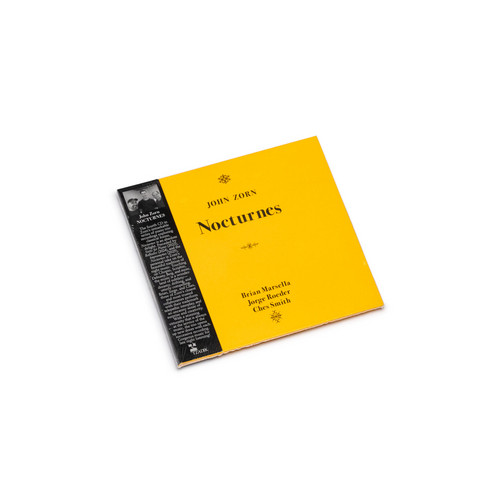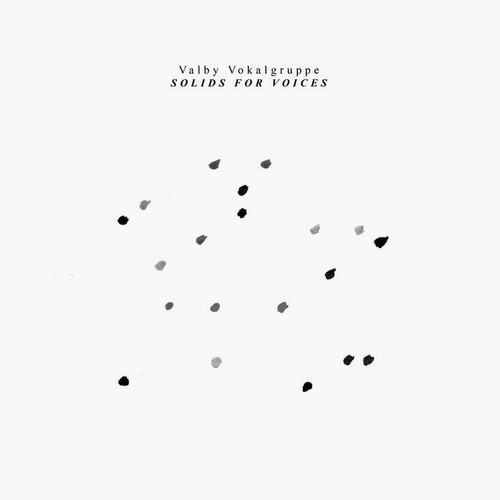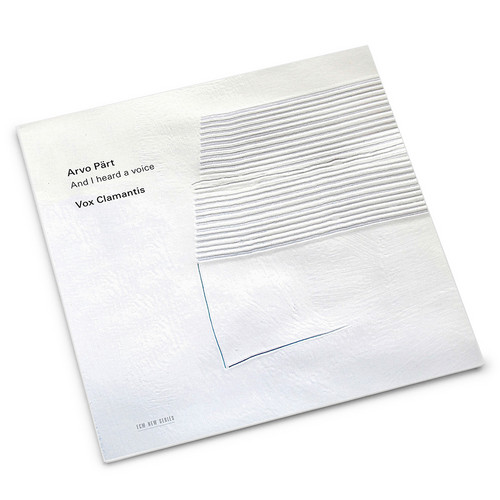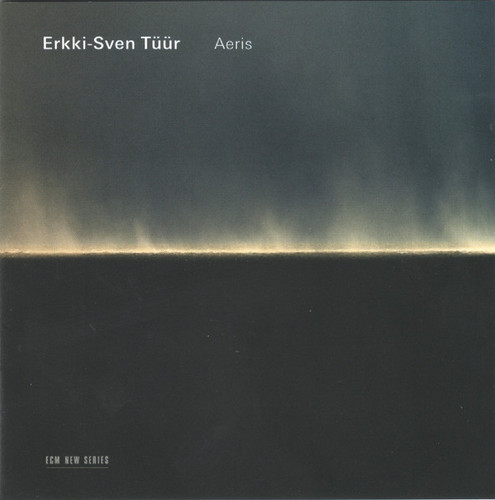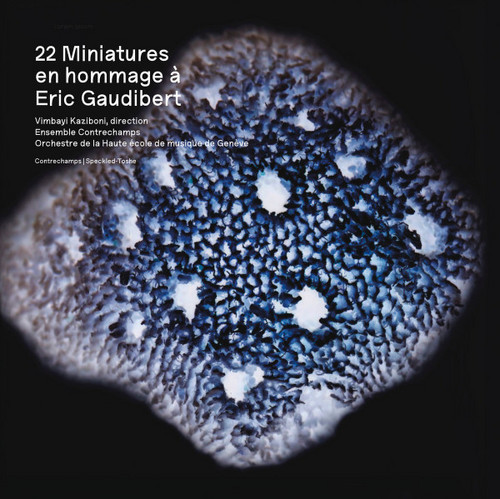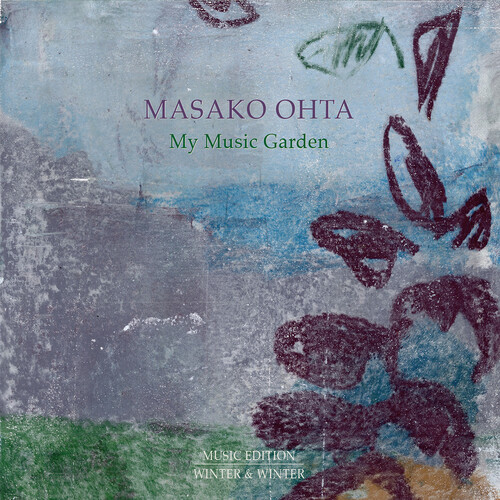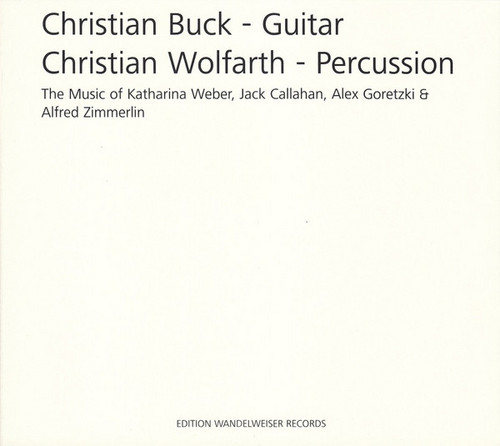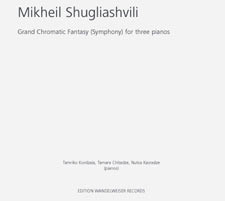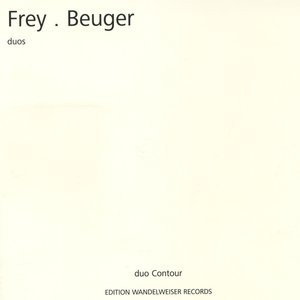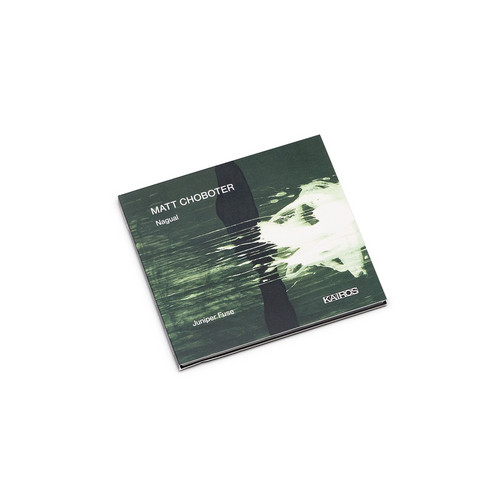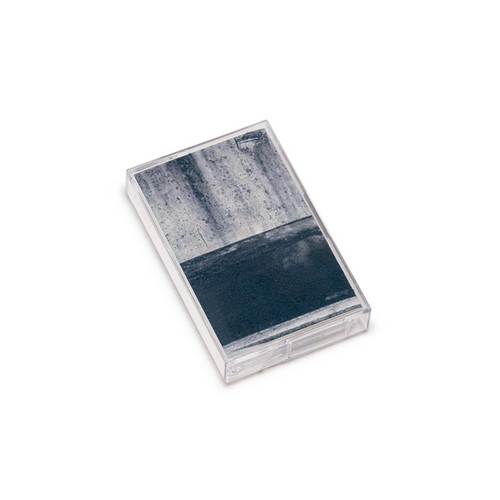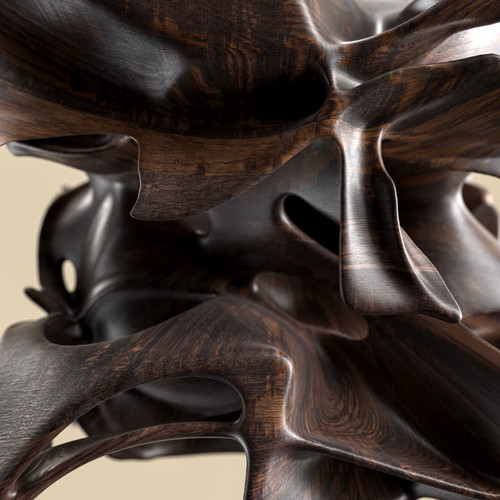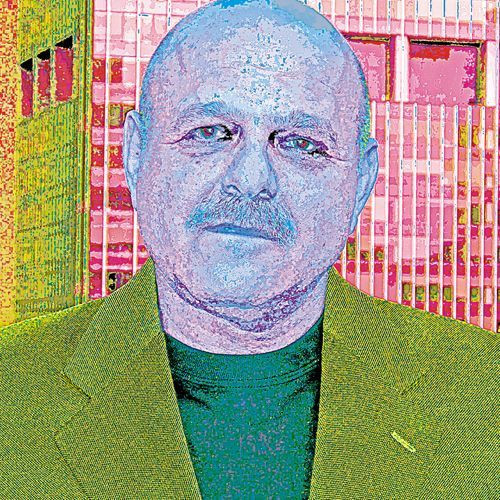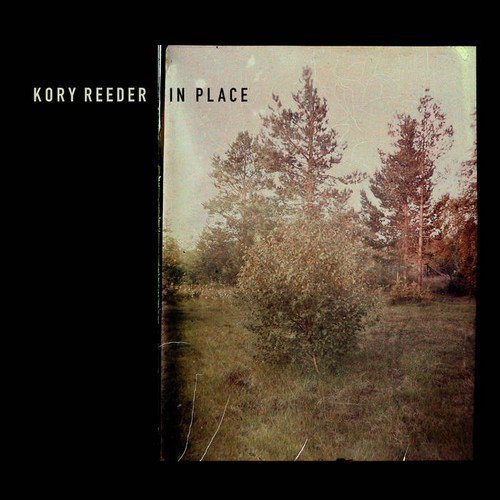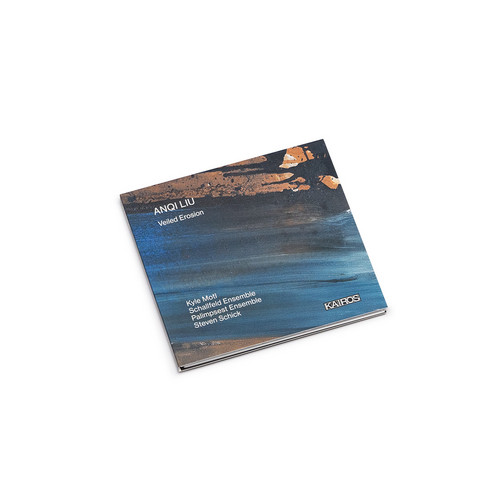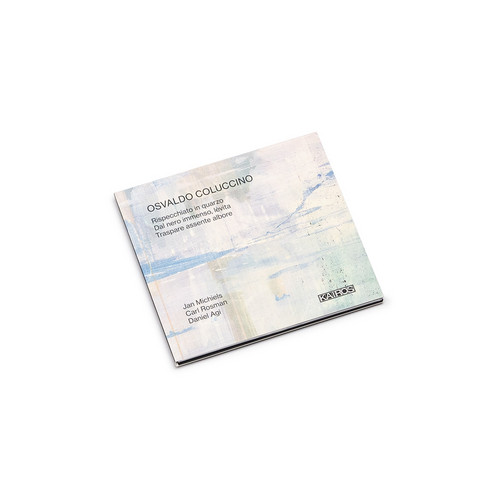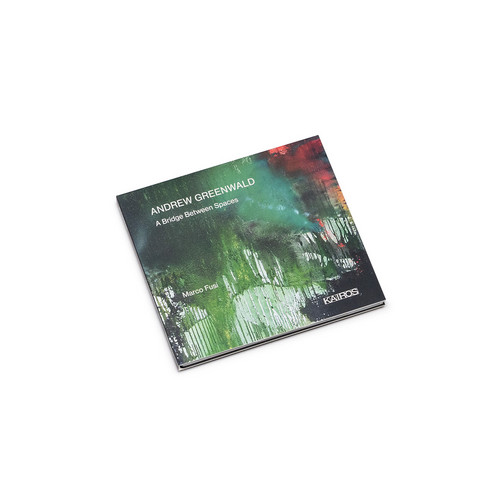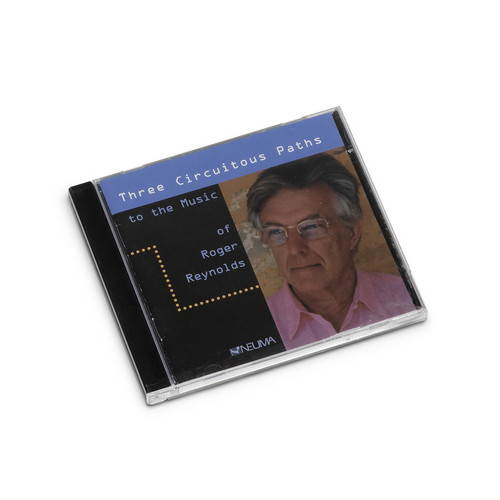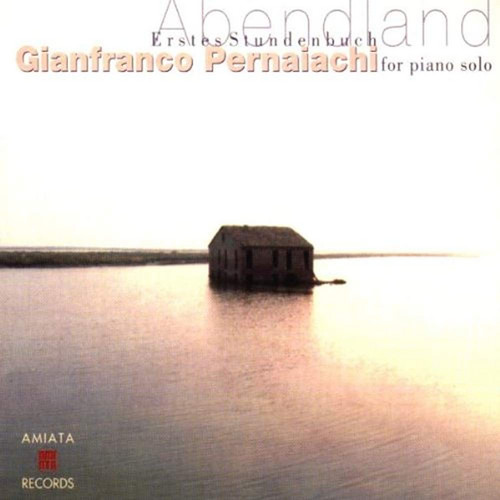Nocturnes
The fourth CD in Zorn’s remarkable series of piano trio recordings exploring classical forms, Nocturnes is an absolute delight. Preceded by Suite for Piano (2022), Ballades (2024), and the Impromptus (2025), Nocturnes is Zorn’s personal take on the beautiful tradition of night music. Touching on Chopin, Scriabin, Debussy, Berg, and more, the music is a wonderland of subtlety—dreamy, drifting, and utterly compelling. Brian, Jorge, and Ches, three of Zorn’s closest and most trusted collaborators p…
Solids For Voices
*300 copies limited edition* Valby Vokalgruppe returns with Solids for Voices — a new album landing on 7th November 2025 via Hands in the Dark. Initiated in 2008 by Anja Jacobsen, the Danish collective’s current line-cup is completed by Lil Lacy, Sonja LaBianca, Cæcilie Trier and Laura Marie Madsen. The group has written and performed a large number of cross-aesthetic pieces over the years, including an album Bah New Era released in 2012 on Eget Værelse.
Sharpened to its core, the group dives de…
And I Heard a Voice
Estonian vocal ensemble Vox Clamantis and their leader Jaan-Eik Tulve have established themselves among the leading interpreters of Arvo Pärt’s music over a quarter-century of close collaboration with the composer – a relationship that builds on the almost half a century long artistic partnership between Pärt and producer Manfred Eicher. Of the ensemble’s ECM New Series recording The Deer’s Cry, the BBC Music Magazine wrote that “the level of artistry necessary to achieve the kind of living, bre…
Aeris
Aeris is the ninth ECM New Series album to feature the vibrant and highly expressive music of Erkki-Sven Tüür. Olari Elts, a long-time champion of Tüür’s compositions, conducts the Estonian National Symphony Orchestra in compelling, intensely-focused performances of Phantasma, De Profundis and Tüür’s tenth symphony ÆRIS, a vast drama of shifting energies and interactions, which is scored for horn quartet and orchestra. The symphony is in four movements that transition seamlessly. Tüür: “Each mov…
22 Miniatures En Hommage à Eric Gaudibert
*2025 stock* Éric Gaudibert’s greatest legacy lies in his artistic generosity, aesthetic openness and commitment to exploration, qualities he shared throughout his career with fellow musicians and students. A decade after his passing, a vibrant and diverse artistic ecosystem shaped by his influence is brought into focus. To honour his memory, twenty-two composers who were accompanied or mentored by Gaudibert on their artistic paths were invited to create miniature works. These brief compositions…
My Music Garden
We are delighted to announce the latest project by acclaimed pianist and composer Masako Ohta, My Music Garden, a luminous and intimate journey into the poetic world of sound. Masako Ohta is celebrated for her sensitive performances and her ability to transcend borders between classical, contemporary, and improvisational music. With My Music Garden, she invites listeners into a personal landscape of reflection and discovery, where every note blooms like a flower in a musical garden.
The progra…
The Music Of Katharina Weber, Jack Callahan, Alex Goretzki & Alfred Zimmerlin
2016 release **
"This release by Edition Wandelweiser Records collects recent compositions by Katharina Weber, Jack Callahan, Alex Goretzki, and Alfred Zimmerlin, performed by Christian Buck on guitar and Christian Wolfarth on percussion. It opens with Callahan’s ‘New Piece’, beginning with quiet feedback and low rumble before moving on to evenly spaced chords, cymbals, and soft beats. There’s an ambiguity or uncertainty to these sounds, or to my hearing of them, in terms of their harmony and ti…
Grand Chromatic Fantasy (Symphony) For Three Pianos
2016 release **
"In the early days of Wandelweiser records, a disc of music by the forgotten composer Herman Van San extended the label’s scope and helped to cement its aesthetic. He was composing long before there was a Wandelweiser group or label, but his outsider static and innovative music was a perfect fit. This disc of music by the all but unknown Mikheil Shugliashvili achieves a similar purpose. Born in 1941, the composer died in 1996, the year of the label’s first release, but his radi…
Duos
2009 release **
"Two sets of pieces written for the duo Contour (Stephen Altoff-trumpet, Lee Forrest Ferguson-percussion), a potentially unwieldy combination. Frey's "22 sächelchen" (small things) is rather just that, 22 miniatures lasting 32 1/2 minutes that vary from quiet reductionism to outright fanfares. I guess some of the latter sort are a bit...shocking, at least in a Wandelweiser context. But there are also oblique references to jazz (the mute in #11), processional music (the tympani in…
Nagual
The album Nagual by Matt Choboter is a sonic ritual that dissolves the boundaries between composition and improvisation, tradition and innovation. Drawing on just intonation, Balinese tuning systems, and South Indian rhythmic theory, Choboter and his ensemble craft a vivid, shape-shifting musical world—at once ancient and otherworldly. Nagual resists the comforts of familiar forms, embracing ambiguity, sensory multiplicity, and intuitive collective listening. This music does not follow a path—it…
Not here but somewhere
*75 copies limited edition* On Not here but somewhere, the Japanese ambient guitarist crafts freeform soundscapes that feel less composed than discovered. Each track unfolds like a whispered conversation between emotion and environment — guitar lines ripple like wind over water, subtly shifting direction, as if carried downstream by a current of pure intuition. The result is a quietly enveloping odyssey, where every piece becomes a new place, felt more than defined.
8 Automated Works
EM Records is proud to present 8 Automated Works, the first full release by Componium Ensemble, an "indeterminate chamber music" ensemble helmed by Spencer Doran of Visible Cloaks. The project is inspired by the long history of automated musical instruments, beginning with the ancient Greek Archimedes and further developed by the Banū Mūsā brothers in 9th century Baghdad, who "first perfected the concept of a programmable, automated musician: a mechanically controlled flute which used hydraulic …
Hyperrealist Music, 2011-2015
"Hyperrealist Music, 2011-2015" is a selection of late masterpieces by Noah Creshevsky, a proponent of "Hyperreal Music," which opened a new door to cyber-human music.
In Place
American composer Kory Reeder’s 10th album In Place returns to the Grid Series heard on 2 of the 4 tracks from Reeder’s debut release on Edition Wandelweiser Records Love Songs/Duets. With raw recordings of three works from the mid-phase of this Series of 45 works, In Place is the first release exclusively containing pieces from the Grid Series and features Reeder on piano with long-time collaborators Kathleen Crabtree and Michael Moore on violas. Each track is a space to dwell, on the edge of s…
Veiled Erosion
Veiled Erosion, the debut album by Anqi Liu, invites listeners into a world of spectral nuance, cultural memory, and fragile connection. Her music breathes through thresholds—between noise and tone, breath and bow, self and other. In the closing Etude for Friends, Liu renders friendship as a sonic practice: intimate, unstable, and quietly transformative. Drawing from Mongolian long song and microtonal chamber traditions, she composes sound as a site of listening, learning, and being-together. Ve…
Rispecchiato in Quarzo
Rispecchiato in quarzo, Dal nero immenso, lèvita, and Traspare assente albore unfold as structured sequences of transformation—transparent, hypnotic, fairy. Each solo instrument (piano, contrabass clarinet, bass flute) interacts with multi-layered electroacoustic textures built entirely from acoustic sources. These “electronics” remain sensitive and natural, shaped through breath, resonance, and subtle manipulations. An 1876 Steinway, spectral clarinet multiphonics, and whispered flute tones for…
A Bridge Between Spaces
A Bridge Between Spaces traces a decade of Andrew Greenwald’s singular compositional journey—across rigorously constructed sonic terrains and into freer, more intuitive musical dialogues. Drawing from two major violin cycles and culminating in the expansive title work, this album captures a shift from analytical exploration to expressive openness. With sound worlds that feel both extraterrestrial and deeply human, Greenwald’s music invites us into a landscape where metaphors fail and sound speak…
Three Circuitous Paths
2002 release (RARE) ** Transfigured Wind III (1984) for flute, ensemble, and tape / Ambages (1965) for flute / Mistral (1985) for chamber ensemble. "Pierre Boulez was widely praised as an innovator for his Rèpons when he premiered it at IRCAM in 1981. This is a piece where a computer samples the live sound of a chamber ensemble, recalculates it to a programmed algorhythm and then scatters the sounds back out into the hall. Not to knock Boulez, but American composer Roger Reynolds had been workin…
Retrospective Episodes
Big tip!!! Firework Edition Records is proud to announce the release of a new 7-CD box documenting Lars-Gunnar Bodin's (1935-2021) musical and artistic output during the years 1960-1987. Apart from more than 8 hours of electroacoustic music and text-sound compositions, the box also features extensive documentary visual material, along with essays by Jesper Olsson, Sanne Krogh Groth, Leo Nilsson, Åke Parmerud, Svante Bodin, Charlotta Bodin och Axel Bodin.
It is hard to give a picture of such a m…
Abendland. Erstes Stundenbuch
1996 release (light storage wear) ** Gianfranco Pernaiachi’s Abendland is a solitary and profound piano solo meditation on sound and silence. The piano hints, rings out and whispers. The sound is crystal clear; essential and like a prism that divides sound into mysterious harmonics and distant resonances. "Abendland“ is a work of great musical poetry, a musical meditation by a composer warranting close attention.
